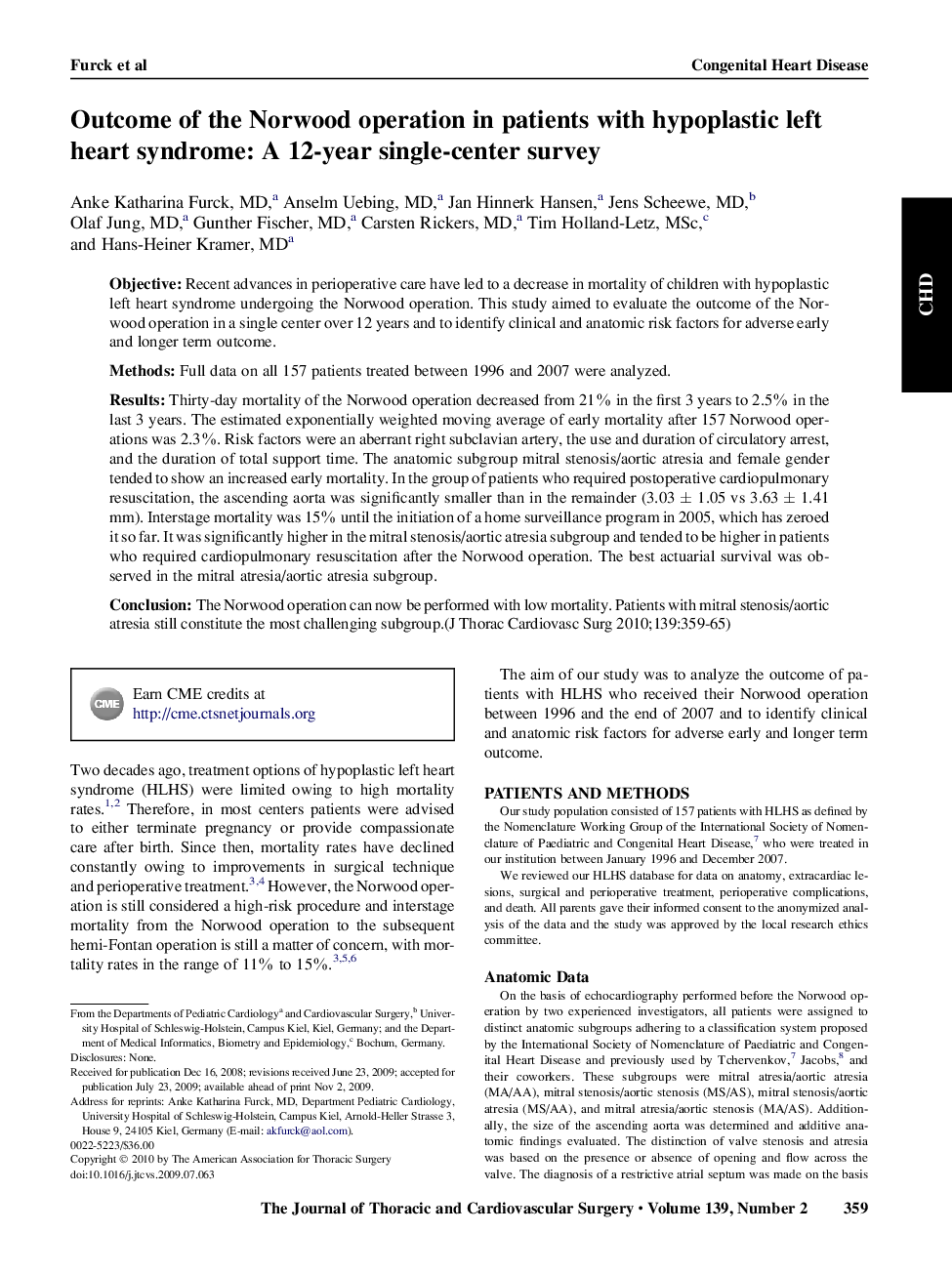| Article ID | Journal | Published Year | Pages | File Type |
|---|---|---|---|---|
| 2984544 | The Journal of Thoracic and Cardiovascular Surgery | 2010 | 7 Pages |
ObjectiveRecent advances in perioperative care have led to a decrease in mortality of children with hypoplastic left heart syndrome undergoing the Norwood operation. This study aimed to evaluate the outcome of the Norwood operation in a single center over 12 years and to identify clinical and anatomic risk factors for adverse early and longer term outcome.MethodsFull data on all 157 patients treated between 1996 and 2007 were analyzed.ResultsThirty-day mortality of the Norwood operation decreased from 21% in the first 3 years to 2.5% in the last 3 years. The estimated exponentially weighted moving average of early mortality after 157 Norwood operations was 2.3%. Risk factors were an aberrant right subclavian artery, the use and duration of circulatory arrest, and the duration of total support time. The anatomic subgroup mitral stenosis/aortic atresia and female gender tended to show an increased early mortality. In the group of patients who required postoperative cardiopulmonary resuscitation, the ascending aorta was significantly smaller than in the remainder (3.03 ± 1.05 vs 3.63 ± 1.41 mm). Interstage mortality was 15% until the initiation of a home surveillance program in 2005, which has zeroed it so far. It was significantly higher in the mitral stenosis/aortic atresia subgroup and tended to be higher in patients who required cardiopulmonary resuscitation after the Norwood operation. The best actuarial survival was observed in the mitral atresia/aortic atresia subgroup.ConclusionThe Norwood operation can now be performed with low mortality. Patients with mitral stenosis/aortic atresia still constitute the most challenging subgroup.
